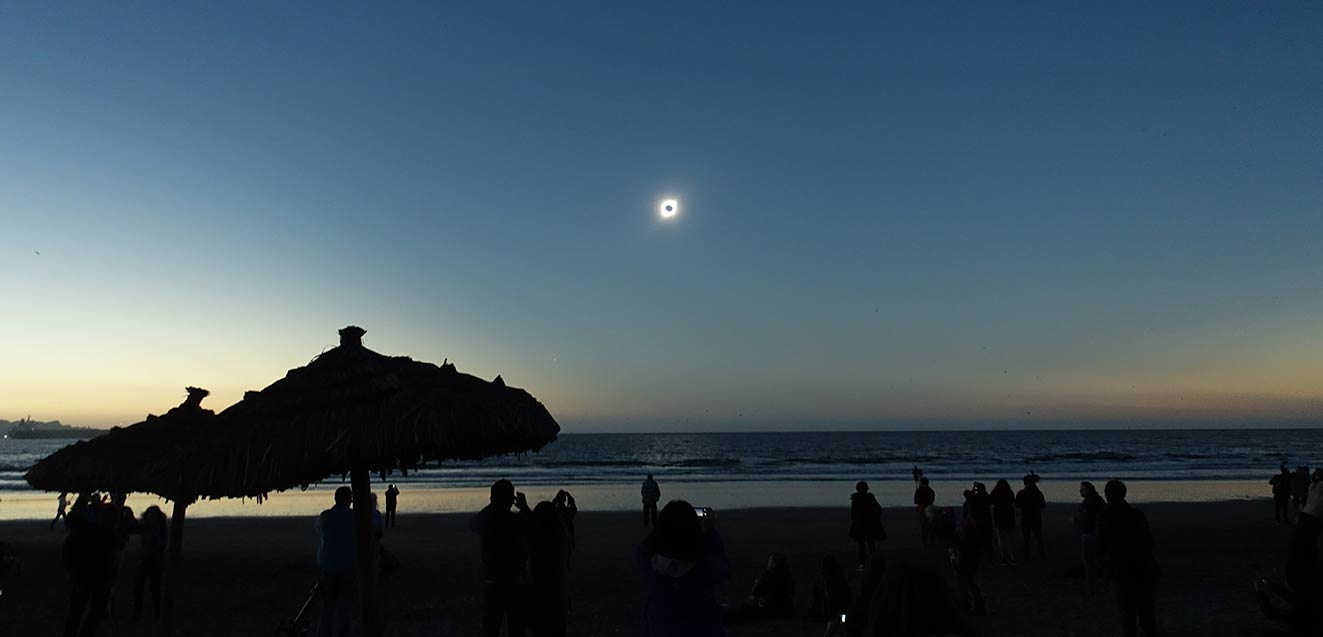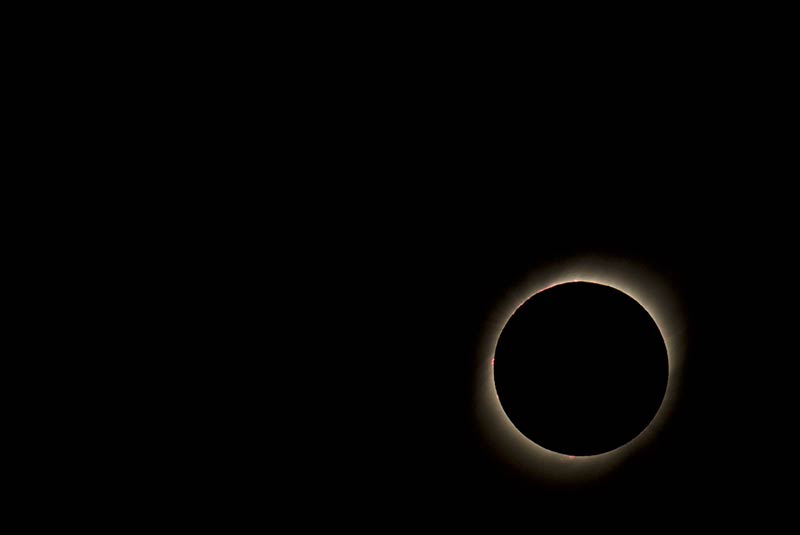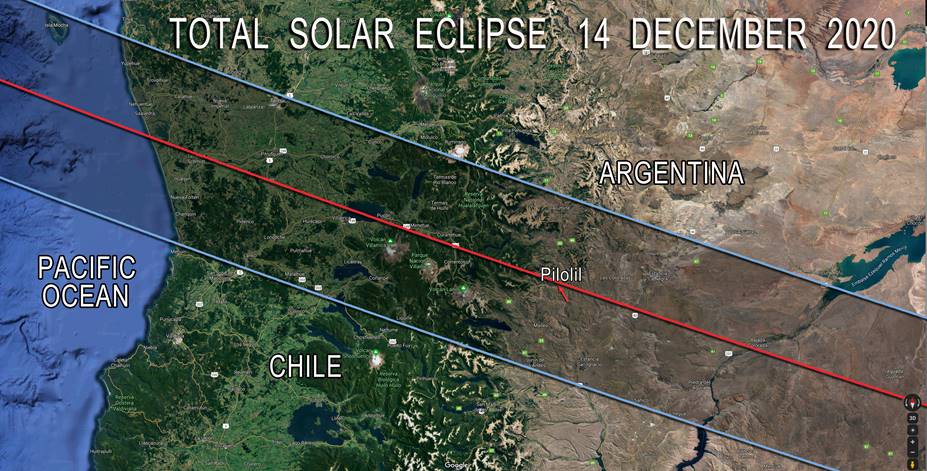Trafficking in Shadow

I am recently returned from The Dark and Chile Total Solar Eclipse of 2 July 2019. After a long haul across the Pacific, where the only landfall was an uninhabited island in the Pitcairn group, totality hit the west coast of South America in northern Chile, and I met the umbra in La Serena at Tololo Beach for about two minutes and 14 seconds of picture-perfect total eclipse. Because the Chile eclipse of 2019 was a late-afternoon event, the sun was low in the northwest when the moon slipped over it and turned a celestial event into a fetching landscape.
Suspended over the Pacific, with beach umbrellas silhouetted in the foreground, the sun revealed a corona, or outer atmosphere, shaped like an arrowhead with the point toward “8 o’clock” and two streamers bulging from the right side of the eclipsed sun at “2 o’clock” and “4 o’clock.” Venus, even closer to the horizon and below and to the left of the hole that eclipse seemed to punch into the sky, popped out only when the eclipse went total. The temperature dropped about 16.3° F., more than I expected. Sea birds that had spent most of the afternoon wading where the modest waves broke onto the beach began to fly aimlessly as totality approached and remained aloft but low until third contact reestablished the kind of lighting usually expected close to sunset.

Moving east, the 2019 total solar eclipse then crossed northern Chile, jumped the Andes into Argentina, and ended its performance south of Buenos Aires.
Totality performs a South American encore on 14 December 2020, but the season then will be summer for Chile and Argentina. The path of totality in 2020 will intercept Chile far to the south of La Serena, close to the latitude of Villarrica, which is about 50 miles east of the coast. The path again jumps the Andes into Patagonian Argentina, where totality will be longest, about two minutes and nine seconds at the point of greatest duration and where the average cloud cover is the lowest. Totality will occur close to 1:00 p.m. local time, and that means the sun will be high (~72°). Because solar activity is still near the low point in the 11-year cycle, the corona in 2020 will probably mimic the 2019 corona.

# # # # #
Dr. Edwin Charles Krupp is an award-winning astronomer, researcher, lecturer, and author. He has been director of the Griffith Observatory in Los Angeles since 1974. He has a special interest in archaeoastronomy, which studies the cultural aspects of astronomy, including eclipse folklore.

